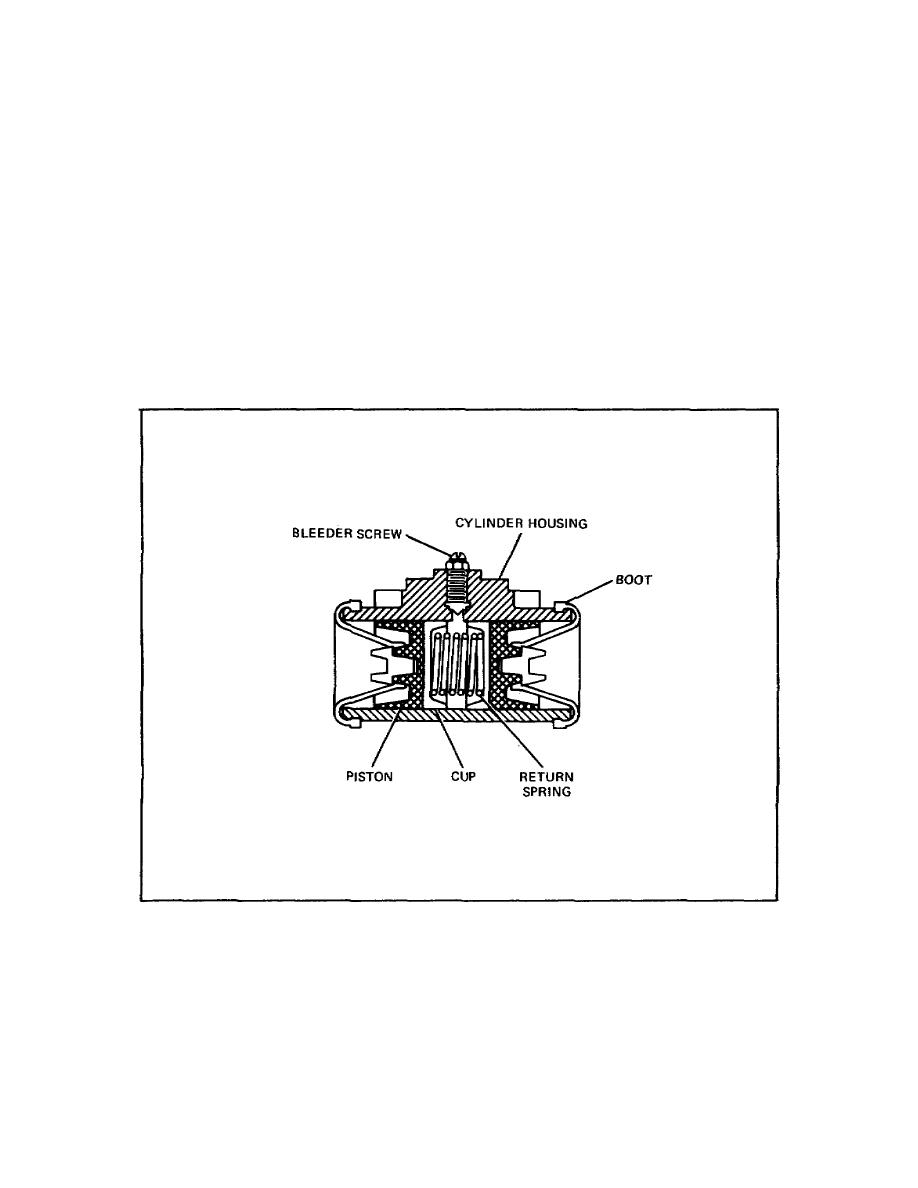
Lesson 1/Learning Event 2
In the outlet end of the cylinder is a combination inlet and outlet
valve which is held in place by the piston return spring. This check
valve is a little different from most check valves that will let
fluid pass through them in one direction only. If enough pressure is
applied to this valve, fluid can go either through or around it in
either direction. This means it will keep some pressure in the brake
lines. The check valve consists of a rubber valve cup inside a steel
valve case which seats on a rubber valve seat that fits in the end of
the cylinder. In some designs, the check valve consists of a spring
operated outlet valve seated on a valve cage rather than a rubber cup
outlet valve. The principle of operation is the same. The piston
return spring normally holds the valve cage against the rubber valve
seat to seal the brake fluid in the brake line.
FIGURE 12. WHEEL CYLINDER.
The wheel cylinder changes hydraulic pressure into mechanical force
that pushes the brake shoes against the drum. The wheel cylinder
housing is mounted on the brake backing plate. Inside the cylinder
are two pistons which are moved in opposite directions by hydraulic
pressure and which, at the same time, push the shoes against the
drum. The piston or piston stems are connected directly to the
shoes. Rubber piston cups fit in the



 Previous Page
Previous Page
